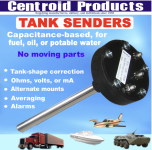Jermechanic
Well Known Member
This looks interesting from Holley. Has anyone tried this fuel level sensor in an aircraft?
https://www.holley.com/products/gau.../gauge_accessories_and_harnesses/parts/19-250
https://fb.watch/ocY8X57Isg/?mibextid=v7YzmG
https://www.holley.com/products/gau.../gauge_accessories_and_harnesses/parts/19-250
https://fb.watch/ocY8X57Isg/?mibextid=v7YzmG





